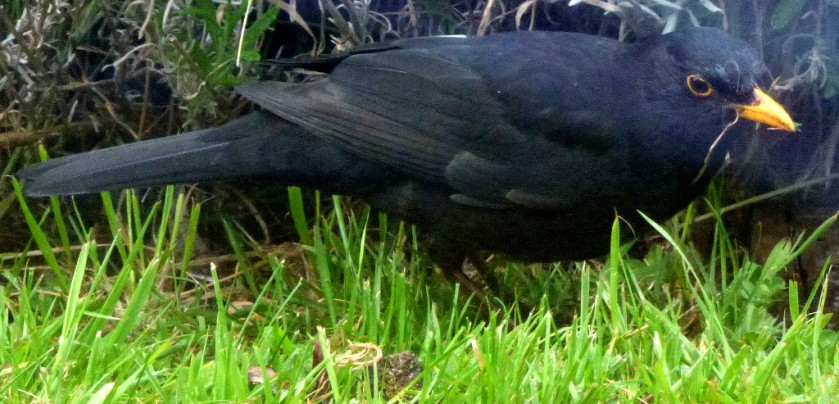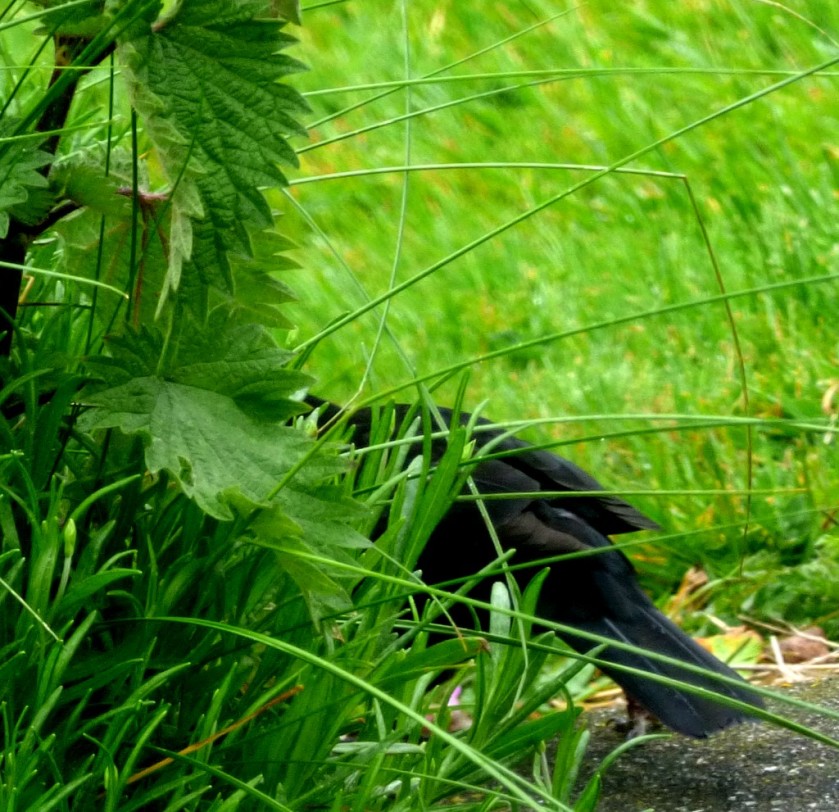INTRODUCTION
Today’s installment in my ‘all time XIs’ cricket series is envisaged to be the penultimate one – I have already selected my teams for tomorrow, and on Thursday I shall be writing about the resumption of test cricket, with one full day and part of the second to provide me with material if all goes well (overlapping the finish of this series with the restart of test cricket is part waiting for developments in the test match and part insurance policy in case of rain. Today we have a team of players who flourished too early and/or in the wrong country to play test cricket and a team of players whose selectors overlooked them in spite of consistent success at first class level.
SYDNEY SMITH’S XI
- John Thewlis – right handed opening batter. He finished just before test cricket started. He scored the first first class century ever for Yorkshire, thereby inking himself indelibly into cricket’s history.
- Ephraim Lockwood – right handed opening batter. He was called up by Yorkshire in emergency as a teenager. When he walked out to open the innings with his uncle, the aforementioned Thewlis, he was jeered by spectators because he did not have the correct kit. They had plenty of time to amuse themselves at the expense of his sartorial inadequacy since he contributed 91 to an opening stand of 176. In August 1876 he was captaining Yorkshire against Gloucestershire at Clifton, with WG Grace coming off the back of 344 for MCC against Kent and 177 against Notts in his last two innings leading the home county. Grace won the toss, batted, and allegedly said in appreciation of the pitch “I shan;t get myself out today, you will have to get me”. He proceeded to make a chanceless triple century, his second in less than a week, driving the Yorkshire fielders and bowlers to the brink of mutiny. At one point Allen Hill flatly refused to bowl when asked to do by his captain.
- Mahadevan Sathasivam – right handed batter. He only got to play in 11 first class matches, spread over five years, and he averaged 41.83, several decades before his country, Sri Lanka, attained test status.
- Steve Tikolo – right handed batter. Kenya’s finest ever batter, he played in the 1996 world cup, being part of the historic win against the West Indies and also making 96 against Sri Lanka in a defeat. His first class average of 48 was much better than his limited overs record and suggests that he would have been well suited to test cricket.
- Ryan ten Doeschate – right handed batter, right arm medium fast bowler. The finest cricketer The Netherlands have ever had, he was a stalwart for Essex through most of the first two decades of the 21st century. His first class figures are excellent, his ODI record makes breathtaking reading, even allowing for the weakness of some of the opponents he faced in that format.
- *Sydney Smith – left handed batter, left arm orthodox spinner. A West Indian, he qualified by residence for Northamptonshire in 1909, did the double in his first season and went on to a distinguished first class career, averaging 31 with the bat and 18 with ball (approx equivalents on today’s flatter pitches, 46 and 27). Inspired by his presence Northamptonshire, promoted to first class status in 1905 and previously known only for taking hammerings, finished second in 1912, a position that 108 years on they have not improved on.
- +Fred Wyld – wicket keeper, right handed batter. A good enough batter to have a first class hundred to his name. His career ended just before test cricket in England started – he was part of the MCC side that played Australia in the game at Lord’s in 1878 that produced the lowest aggregate ever for a completed first class match – 105 runs for 31 wickets. In the second innings he and Flowers, also of Notts, shared a stand that accounted for 15 of MCC’s 19 all out.
- Bart King – right arm fast bowler. The greatest of all USian cricketers, but not quite great enough to propel them to test match status (it was talked about at one point). He had a credit balance between his batting and bowling averages, averaging 20 with the bat and 15 with the ball in first class cricket.
- Palwankar Baloo – left arm orthodox spinner. He took his first class wickets at 15 a piece, playing a decade or so before his country gained test status. As a low caste commoner he could not, unlike ‘Ranji’, ‘Duleep’ and the elder Nawab of Pataudi light out for England and establish himself there. Indeed caste prejudice delayed his selection for The Hindus in what was then the Bombay Quadrangular, and which later became the Bombay Pentangular and later still was abolished.
- Sandeep Lamichhane – leg spinner. The Nepali has made a big name for himself playing franchise and limited overs cricket, and I hope that he will eventually get to play regular first class cricket. There is little chance of him ever being a test player, because Nepal are not currently close to being strong enough as a whole to compete at that level, and such elevations need to managed carefully – Bangladesh and Zimbabwe both suffered from ill-timed promotions to the top table, as in a different way have Ireland, while Afghanistan’s promotion was properly managed.
- William Mycroft – left arm fast bowler. He was just too old to catch the start of test cricket, being born in 1841. He took 863 wickets in 138 first class appearances at 12.09.
This side has a strong top five, a genuine all rounder at six, a keeper who can bat and four excellent and well varied bowlers. Mycroft and King look an excellent new ball pairing, with ten Doeschate as support seamer if needed, and Lamichhane, Baloo and Smith to bowl spin.
CEC PEPPER’S XI
- John Langridge – right handed opening batter. He amassed 76 centuries in his long first class career, but was never once selected for England. He also pouched 788 catches in the field.
- Alan Jones – right handed opening batter. He was selected for England against the Rest of the World in the hastily arranged series of 1970 which took the place of the planned visit by South Africa, but that series was not accorded test status (although illogically certain later matches between Australia and non-national XIs have been given test status and contribute to, to give just one example, Shane Warne’s wicket tally. He scored more first class runs, 36,049 of them including 56 centuries, than anyone else who never to got to play test cricket.
- Percy Perrin – right handed batter. He amassed 66 first centuries, including a best of 343 not out, which at the time he compiled it was the fifth highest score ever in first class cricket. His driving off the front foot was so fierce that opposition teams would regularly have four fielders posted in the deep to reduce his scoring rate from such shots. Yet the England selectors ignored him completely. Ironically once his own career was done he became a selector himself, and was at one stage chairman of selectors.
- Jamie Siddons – right handed batter. His career began in the mid 1980s and ended at the start of the 21st century. In that period he scored just over 11,000 first class runs at an average of 45, a very impressive record, but not quite enough to secure him a baggy green.
- Tony Cottey – right handed batter, occasional off spinner. The 5’4″ Swansea native scored almost 15,000 first class runs at an average of 36. He also tended to produce when his side really needed it – he would be far more likely to make a hundred if he came in at 30-3 than from 300-3. However, England selectors have always seemed to have great difficulty comprehending what is going on to their west, and Cottey was a victim of this, somehow being entirely overlooked at a time when the England middle order was not generally noted for its solidity.
- Basil D’Oliveira – right handed batter, right arm medium fast bowler. He did get to play test cricket eventually, but his international career started for England when he was in his mid-thirties, instead of for his native land a decade earlier. His performances in the cricket he was allowed to play in his native land, and for the SACBOC XI, the only remotely representative South African side to be selected prior to the 1990s (there were no whites involved, but not because they were excluded – they chose not to participate) give a hint of what the world missed because of this. While I acknowledge, as I did yesterday, the misfortunes of those such as Graeme Pollock, whose careers were ended prematurely by their country’s isolation I am far more concerned for the likes of Krom Hendricks and others who were deprived of the opportunity to forge an international career purely because of the colour of their skin, and my selection of Basil D’Oliveira, a man who in spite of being well past his cricketing prime by the time he got to play test cricket averaged 40 at that level and took some important wickets (notably that of Barry Jarman at The Oval in 1968 in the game in which he scored 158 in the first innings, which opened up the tail for Derek Underwood) is an acknowledgement of their plight.
- *Cec Pepper – leg spinner, right handed batter. He averaged 29.64 with the bat and 29.35 with the ball in a 44 match first class career. He was also a highly regarded Lancashire League pro, having decided that he was not going to be selected for his native Australia. Once his playing days were finished he became an umpire.
- +Colin Metson – wicket keeper, right handed batter. An excellent keeper for many years, but England were always looking for a better batter to do the job. It was true that Metson was no great shakes with the willow, but he did score useful runs on occasion (and nearly all of his runs were useful – like Cottey he responded well to his side being in need).
- Don Shepherd – off spinner. He took more first class wickets than any other bowler who never played test cricket (2,218 at 21.32). It must be acknowledged that England had a wealth of good off spinners at the time, with Appleyard and Laker overlapping the early part of his career, Illingworth, Titmus, David Allen and John Mortimore being around during the latter part of his career, but nevertheless it does look odd that he never got picked at all.
- Eddie Gilbert – right arm fast bowler. Playing for Queensland against NSW he once produced a spell that included inflicting on Bradman what the great man himself described as “the luckiest duck I ever made.” NSW were dug out of trouble on that occasion by Stan McCabe who scored a double century. Bowling against Jardine in one of the minor matches of the 1932-3 Ashes tour he scored a hit on the England skipper’s hip which according to eyewitness Bill Bowes left a discoloured area the size of a soup plate. Had Australia decided to fight fire with fire, he along with ‘Bull’ Alexander, Laurie Nash and Jack Scott was one of the fast bowlers they might have turned to. As it happened Australia went for the moral high ground, and for firing of whingy cables to the MCC headquarters in London (nb the first complaining cable was sent when Australia were headed for heavy defeat in the third match of the series at Adelaide – no complaints after the opener in Sydney when McCabe made runs in an Aussie defeat, nor after the second at Melbourne when Bradman made a ton in an Aussie win, but only once it was obvious that England were taking a firm grip on the series did the complaining start). Eddie Gilbert may well have been a victim of prejudice – he was aboriginal, and the first player of acknowledged aboriginal descent to don the baggy green was Jason Gillespie in the 1990s.
- George Dennett – left arm orthodox spinner. 2,151 first class wickets at 19.82 for the Gloucestershire man, and never an England cap. When he was in his absolute prime in the years running up to world war 1, first Wilfred Rhodes and then Colin Blythe (2,503 first class wickets at 16) were the left arm spinners of choice for England, and with Woolley a regular pick for his batting and also a fine left arm spinner there was simply no vacancy for a second specialist in that role.
This side has a strong top six, a genuine all rounder at seven, a splendid keeper and three excellent specialist bowlers. The pace department is weak, but George Dennett regularly took the new ball for Gloucestershire, and Pepper as a Lancashire League pro must have done so on occasions as well. I might have strengthened the pace bowling department by including Tony Nicholson (879 wickets at 19.76 each for Yorkshire), but I wanted Pepper as captain, and felt that Dennett and Shepherd had irrefutable cases for selection and that I could not afford to drop a batter to accommodate Nicholson.
PHOTOGRAPHS
Time for my usual sign off…


























































































































